Skip to content

 Fungi treasures from the Cooloola BioBlitz
Fungi treasures from the Cooloola BioBlitz
cover image Omphalotus nidiformis © Sandra Tuszynska
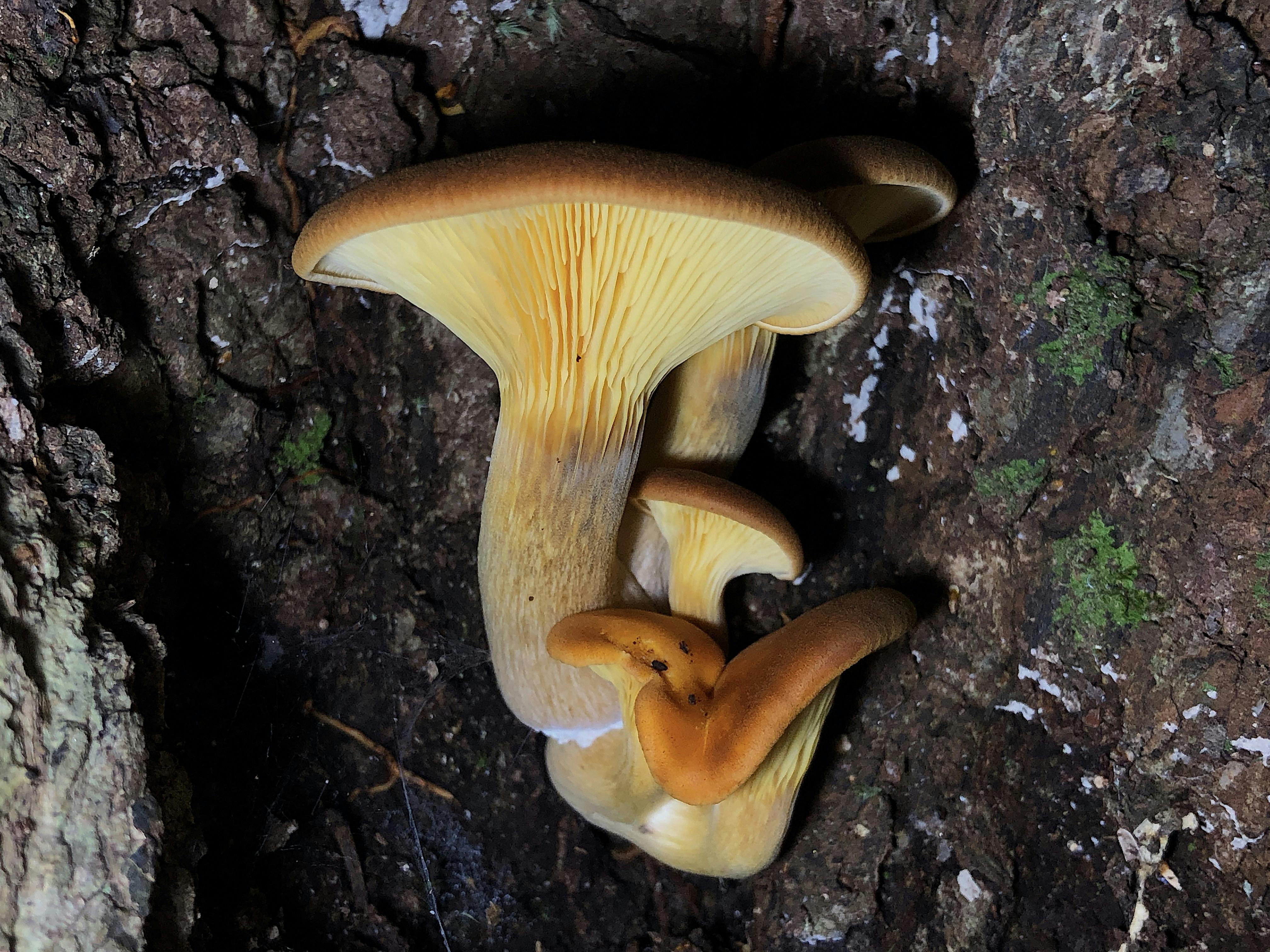

Panus sp ‘cooloola’ © Sandra Tuszynska
The third of its kind Cooloola BioBlitz 2021 (May 14 – 16th) was a wonderful experience for all of those who attended. Surveys included botany and bryology (mosses and allies), entomology, arachnology and mycology (fungi). The aim of a BioBlitz is to try and record as complete a snapshot of all the biodiversity in a given study area, usually over 48 hours, using the help of citizen scientists. The fungi team was very lucky this year, as the area received some rain leading up to the BioBlitz, in contrast with 2018, which was so dry that fungal fruiting bodies were seldom encountered. Prior to the BioBlitz, a Wildnet check revealed that 237 different fungi have been recorded for the whole of the Great Sandy National Park, a remarkably low number for what must be one of the best studied sites in Queensland. This year, the fungi team headed by mycologists Sandra Tuszynska and Patrick Leonard, recorded over during the BioBlitz. Some species were present at both survey sites.
90 specimens
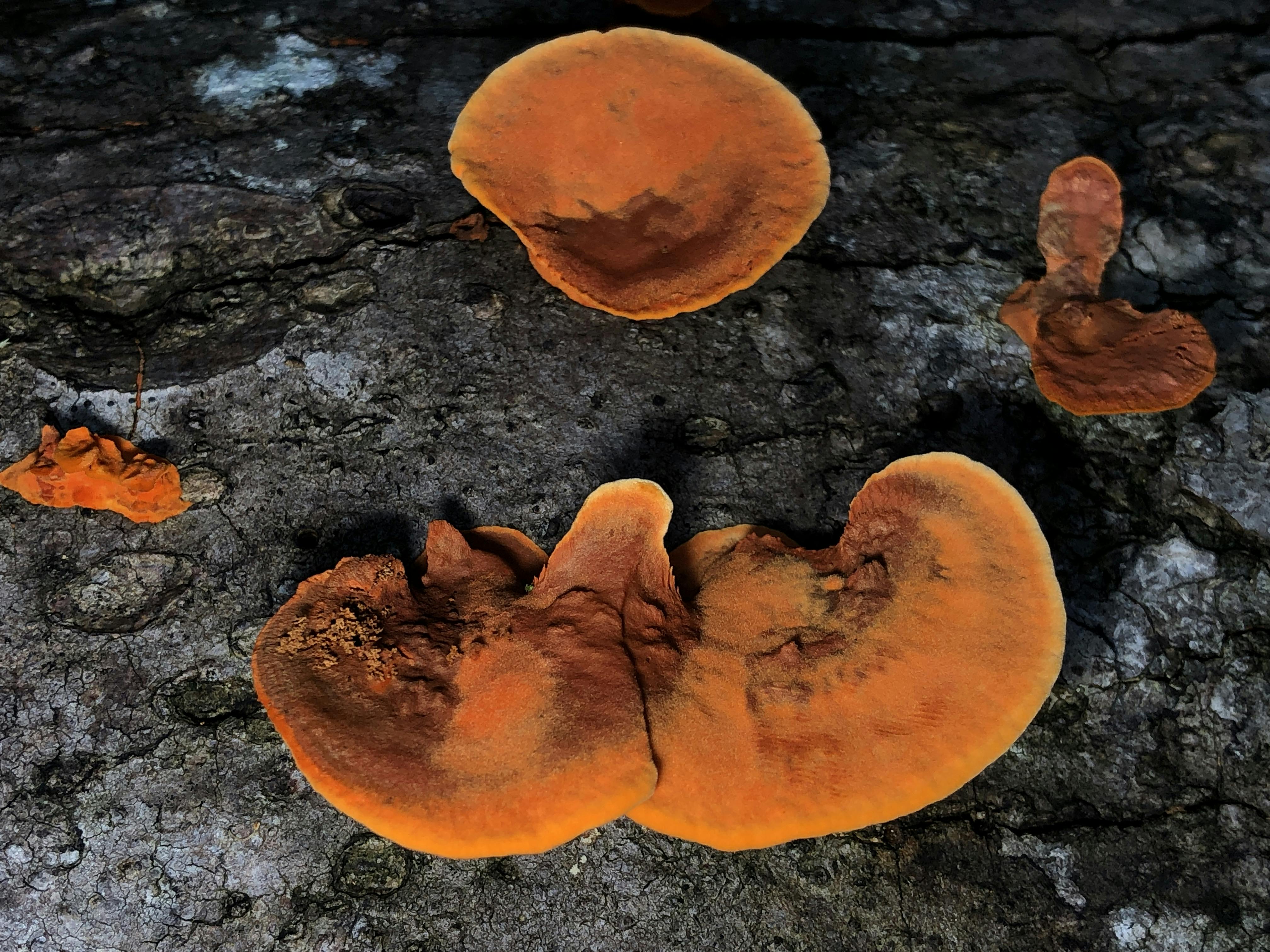

Trametes coccineus, is perhaps the most common and widespread species of bracket fungi © Sandra Tuszynska
Ghost fungi
Omphalotus nidiformis, also known as ghost fungi, are beautiful, large white gilled mushrooms, which can be mistaken for oyster mushrooms, but are poisonous. Large crops were scattered across the two survey sites. The second evening following the frog survey curious participants visited some of the crops in the dark of the night. Some were too old to glow, while others gave off an eerie white light. On images the bioluminescence shows up as green light. It’s obvious now why these are called ghost fungi.
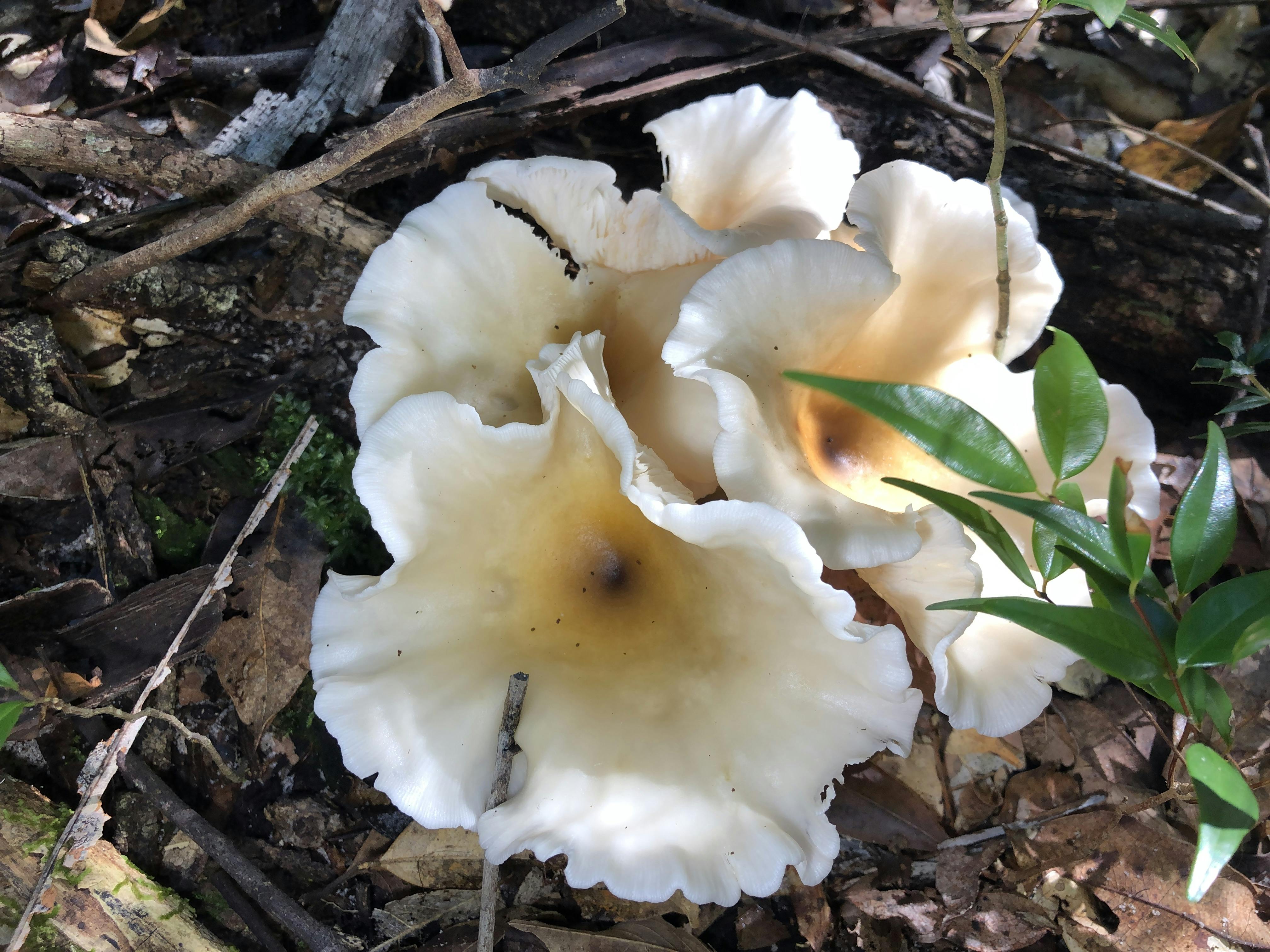

Omphalotus nidiformis - ghost fungi © Sandra Tuszynska
A blue staining symbiont
 Gyroporus australiensis © Linda Tabe
Gyroporus australiensis © Linda Tabe

Linda came upon Gyroporus australiensis, belonging to the Boletales (boletes) order of mushroom-like fungi that have a layer of sponge-like pores on the underside of the cap instead of gills. Like in several boletes, its flesh stains blue. A compound called variegatic acid is exposed to air and the oxygenase enzyme converts the variegatic acid to a blue quinone methide. This mushroom belongs to a mycorrhizal group of fungi, being symbiotic with roots of specific species of trees, providing its host tree with nutrients, water, protection from pathogens and other services.
The mysterious Entoloma
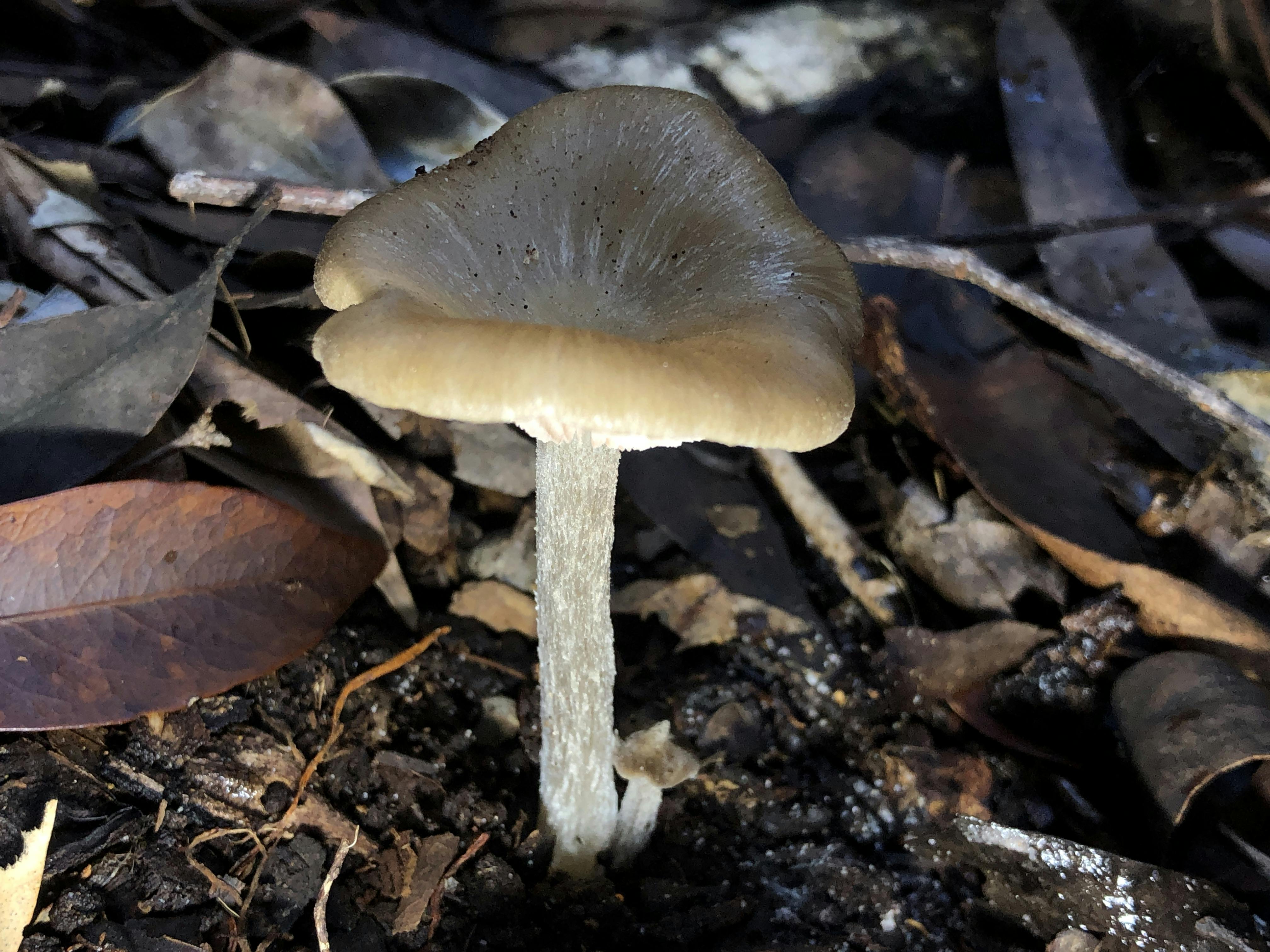

Entoloma aff scabiosum © Sandra Tuszynska. Entolomas are root symbiotic mushrooms which contribute to tree growth, health and nutrition.
These mushrooms were encountered several times, producing a pink spore print. Microscopy examination revealed pentagonal spores placing it in the genus Entoloma. A search through the only available keys, Entolomataceae of Tasmania and the key to the Entolomas of South Australia, produced no match to any published species.
A tiny rarely seen fungal treasure
When back in the Community Hall to examine some collected fungal treasures (appropriate permits are essential), a participating citizen scientist, Amber Forbes presented a photo of a tiny mushroom hiding in a nook of decomposed logm she found during another survey. It was clearly different from anything recorded so Patrick Leonard (leading mycologist) asked Amber without much hope if she could find it again. Triumphantly, Amber returned to the “lab” with the specimen an hour or so later. She used iNaturalist’s geotagging and mapping technology to recover the mushroom, barely 3 millimeters tall with a cap less than a millimeter in diameter. “Icing sugar” on the cap and minute size suggested the genus Hemimycena, but microscopic examination matched the collection to Mycena piringa. There are quite a few photographic records in the ALA from Victoria and Tasmania, but this is only the second record of it in Queensland. It’s tiny size most likely contributes to its inconspicuousness.


Dissecting microscope image of the 3mm tall Mycena piringa © Sandra Tuszynska
The stunning Panus
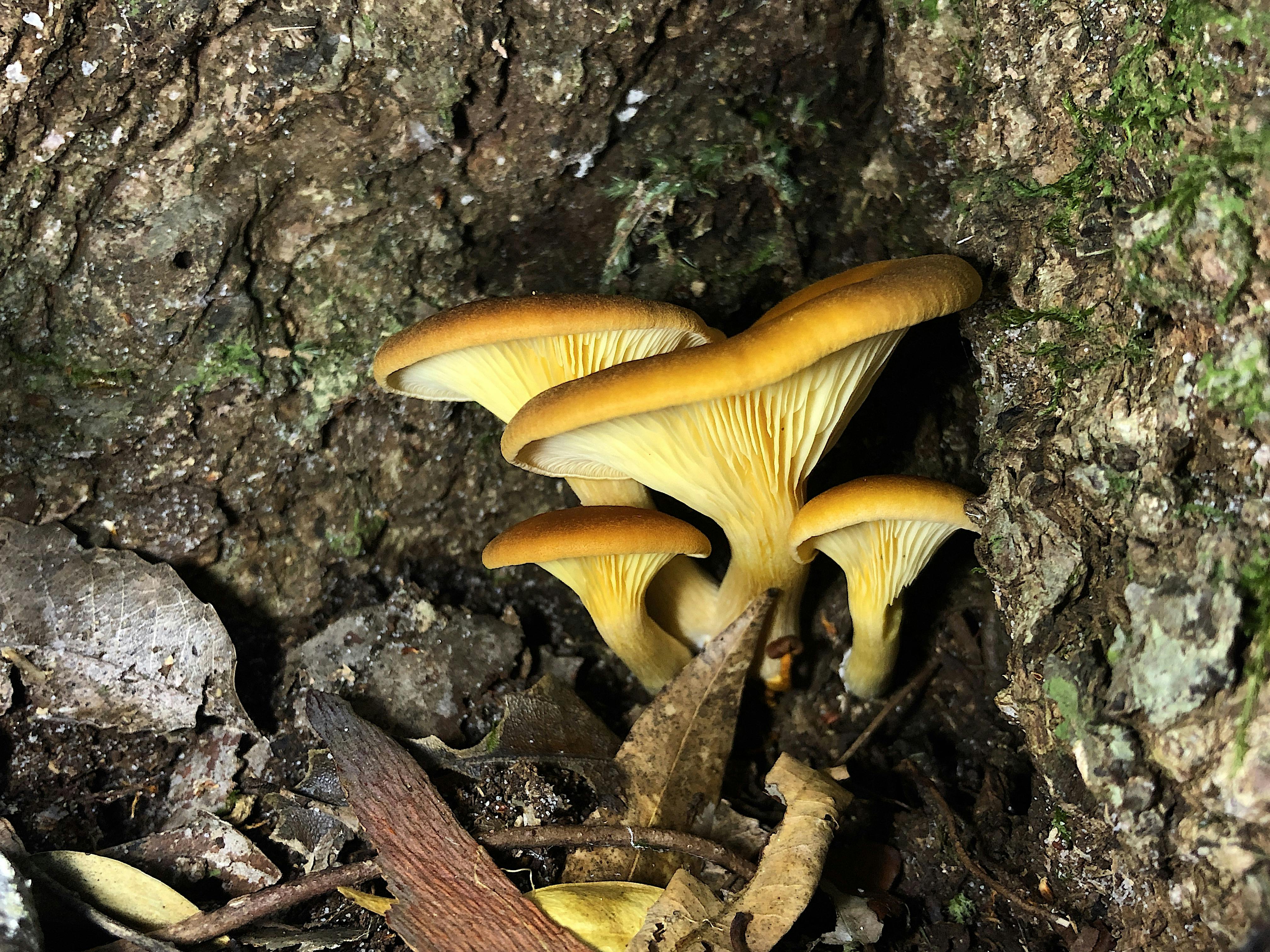

Panus sp ‘cooloola’ © Sandra Tuszynska
Another stunning specimen growing on a tree trunk with tough rubbery flesh, with a deep apricot brown cap resembled an oyster mushroom. Under the microscope there were two or three different kinds of hyphae (fungal cells) and oblong spores, suggesting it might belong to the Panus genus, fungi of the polypore group which usually display pores instead of gills on their underside. A search through a key did not reveal an exact match, so Patrick temporarily named it Panus sp ‘cooloola.’
Truffle treasure
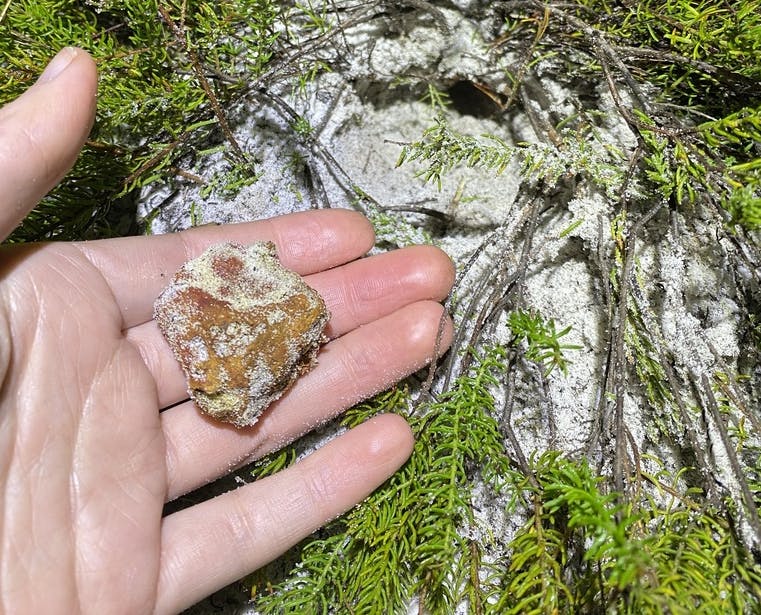
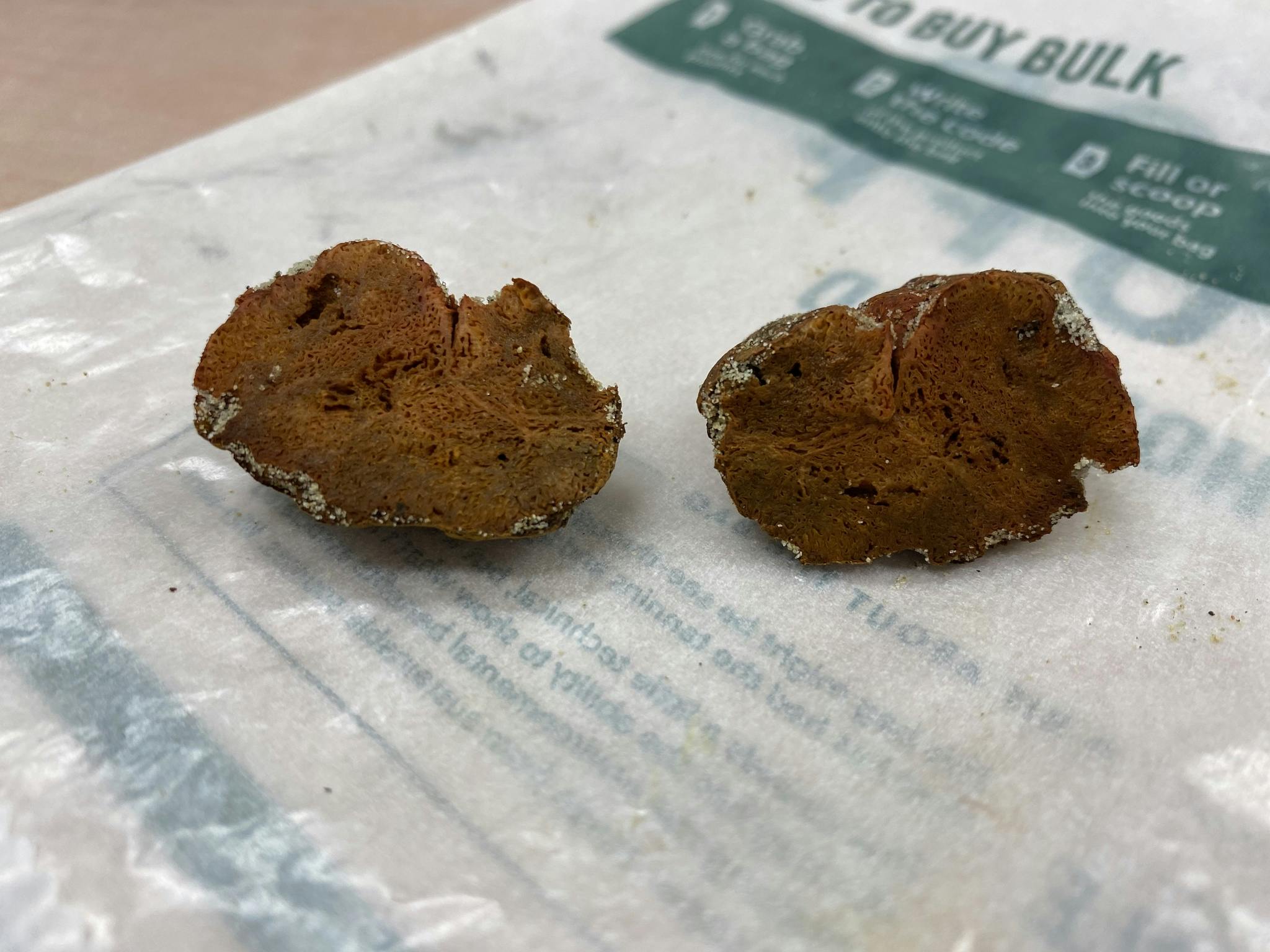


Soliocassus polychromus truffle © Jessa Thurman
A truffle was collected near the Carlo Sand Blow by a University of Queensland Entomologist, Jessa Thurman. Brightly coloured, with fusoid spores like those of a Bolete, which was a few days later, suggested to be Soliocassus polychromus by Susie Webster (QLD Mycological Society member). Australia has the richest biodiversity of at least 2000 truffle species. Only 300 have been described, mostly by Prof. Jim Trappe, a renowned US mycologist. Truffles are underground (hypogeous) fruiting bodies of root symbiotic fungi (ectomycorrhizal fungi) which provide minerals, water and protection to their specific host tree(s) in exchange for photosynthetic nutrients. Many can be an exclusive food sources for bettongs, potteroos and other marsupials, which in turn help to disperse truffle spores. There have been nine previous collections of Soliocassus polychromus in Queensland, the Northern Territory and Papua New Guinea.
Australian chanterelles


Australian chanterelles (Cantharellus concinnus) © Sandra Tuszynska
Australian chanterelles (Cantharellus concinnus) were spotted growing on the side of the Pettigrews Road circuit track. These spectacular mushrooms are bright orange and edible, like truffles they are symbiotic and essential partners of particular tree species.
Zombie ant fungi
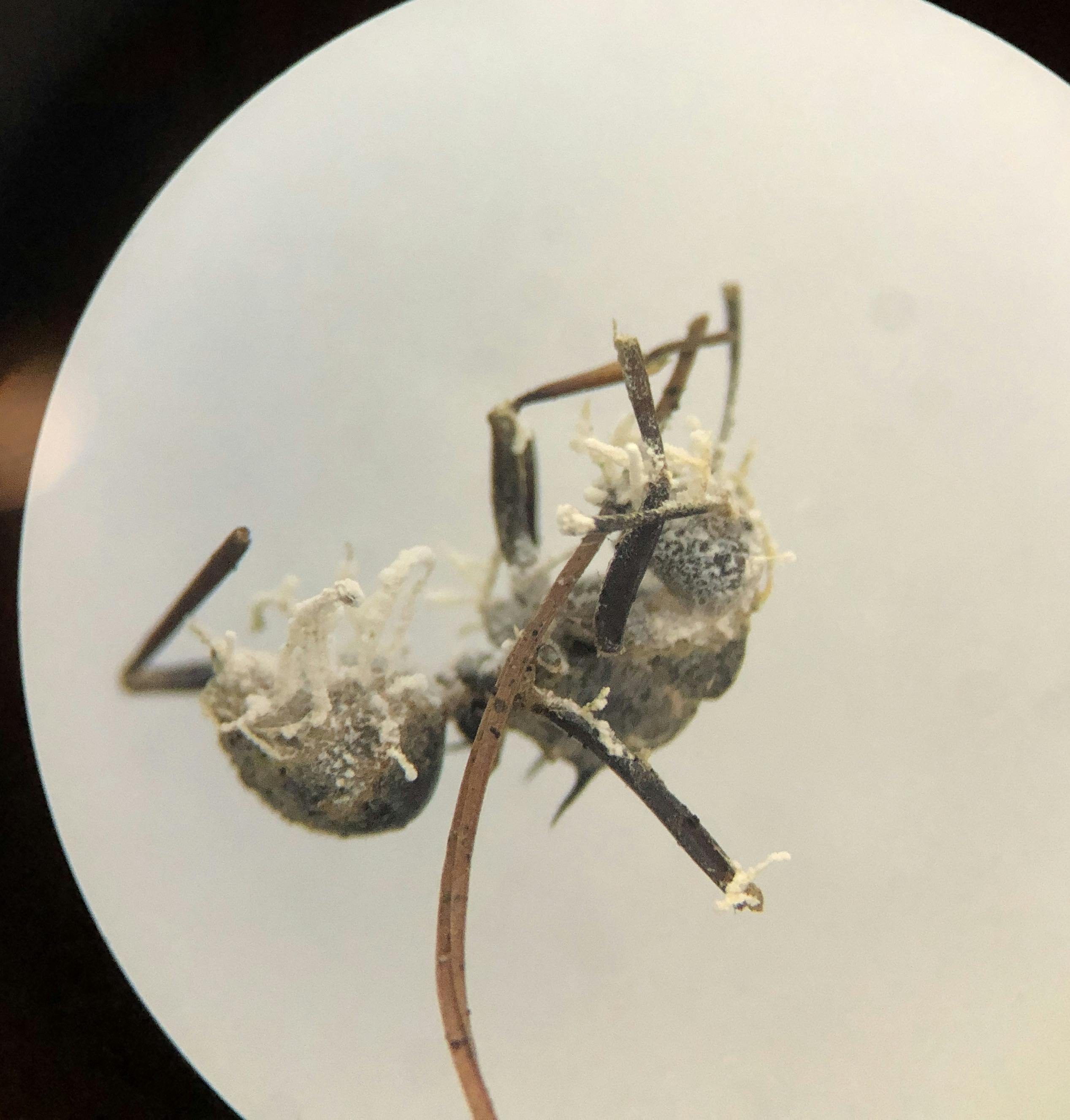

Possibly a species of the family Ophiocordycipitaceae which parasitised a Polyrachis ant © Sandra Tuszynska
Another interesting discovery was made by Majenta Lehr-Reid, who has dreamed of seeing an entomopathogenic or “zombie fungus” in action. During a botanical survey at Searys Creek she noticed tiny white feathery objects on some Tassel Cord Rush plants, Baloskion tetraphyllus. Upon, closer inspection, she realised that these were in fact zombie ants. There are specific fungi which parasitise specific insects and spiders, “zombifying” the creature by controlling its behavior. Upon eventual death of the host, the fungus produces spores out of tiny fruiting bodies to infect more hosts. Back in the “lab” Sandra magnified the ants using a dissecting microscope attached to a big screen. The ants were identified as belonging to the Polyrachis genus. Several fungal pathogens of ants have been reported as members of the family Ophiocordycipitaceae in the order Hypocreales.
Giant, dragon springtail


The giant dragon springtail Acanthanura © Sandra Tuszynska
Another highlight was the discovery of the giant (5mm long), dragon springtail Acanthanura, when examining fungi on some very decomposed wood. It has been a dream to encounter one of these ancient invertebrates known as Collembola, for a long time. Springtails are mostly very tiny, some only fractions of a millimeter long and very understudied, much like fungi. Perhaps around fifty species of the endemic Acanthanura may occur in Australia, only one of which has been described, in addition to those found in Tasmania. Many are mycophagous (fungi eating), releasing the nutrient content of fungal cells (hyphae), as available plant nutrients. This is extremely important in forest nutrient cycling. Learn , on the Chaos of Delight website.
Conclusion
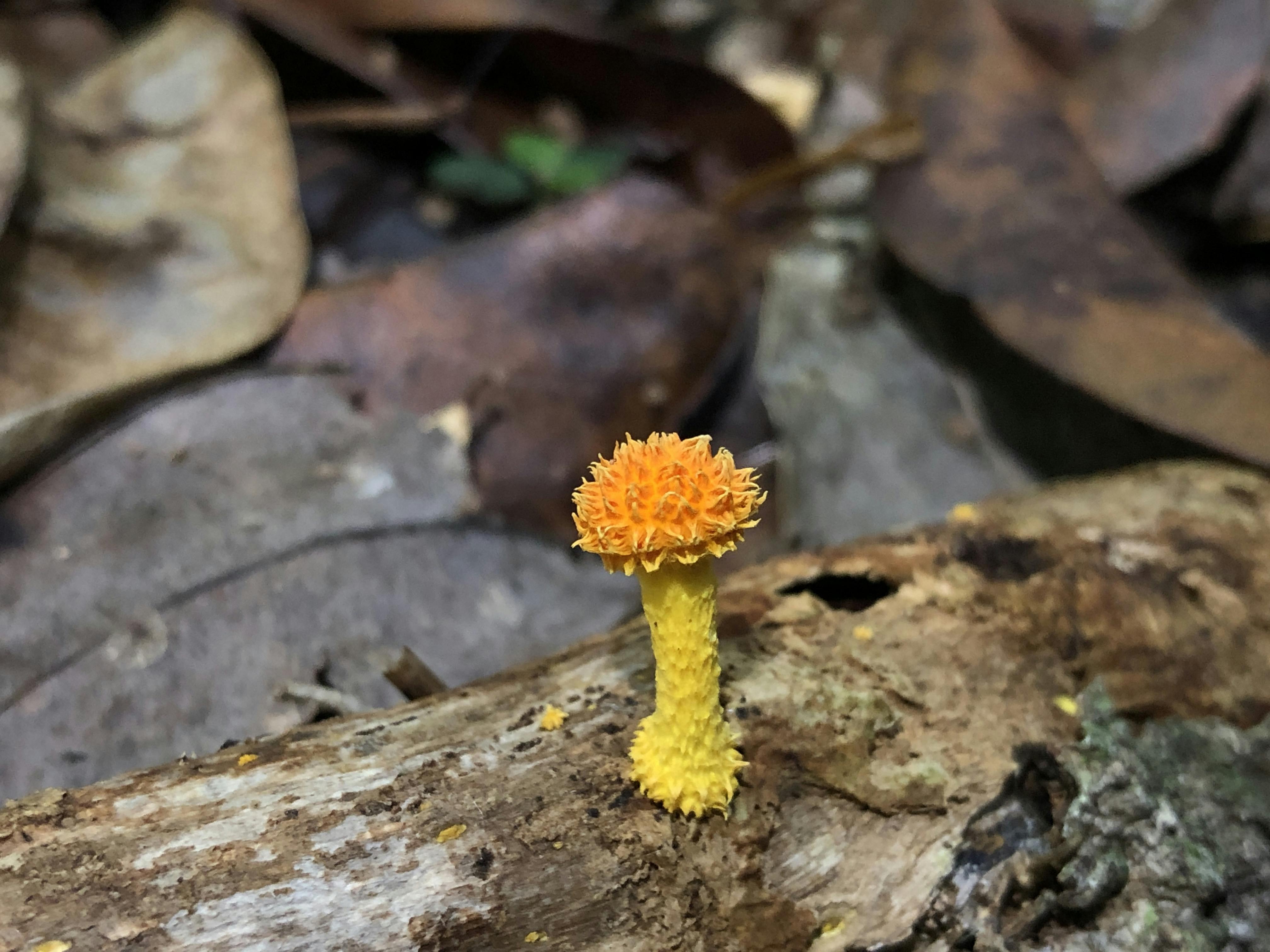

Cyptotrama asparta, a relatively common but adorable small mushroom, which loses its shagyness once mature © Sandra Tuszynska
The beauty of participating in a BioBlitz is the collaborative discovery of multiple life forms in a small area, which an individual would have to spend a long time to discover on their own. Several pairs of eyes attuned to finding a specific taxonomic group of organisms, coupled with the expertise of a leading bio-expert, allows for thorough surveying of bio-treasures, many of which are still unknown to science, and mostly go unnoticed. The photo sharing capacity of biodiscovery tools like iNaturalist, displays the sheer power and importance of citizen scientists in biodiversity research.
Want to print your doc?
This is not the way.
This is not the way.

Try clicking the ··· in the right corner or using a keyboard shortcut (
CtrlP
) instead.